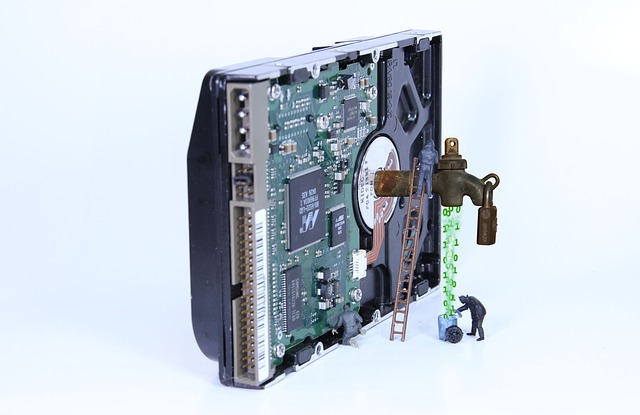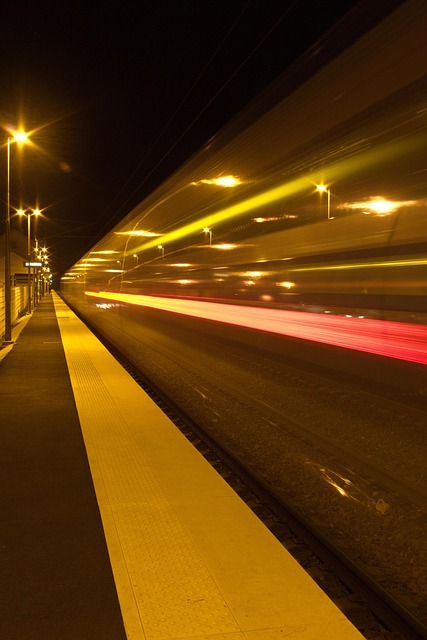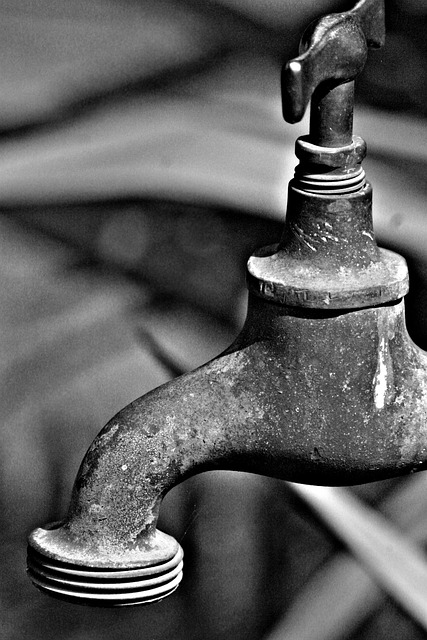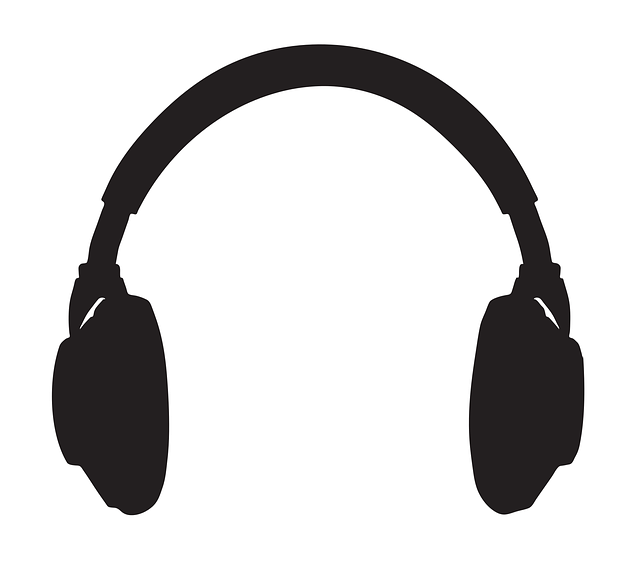Plumbing leaks, caused by issues like corrosion or worn parts, require prompt identification through signs like dampness or low water pressure. Regular maintenance and modern leak detection tools, such as infrared cameras, acoustic sensors, and smart water meters, prevent significant damage, water waste, and financial burdens. Advanced technologies like pipeline inspection cameras and leak detection dogs offer efficient solutions in hard-to-reach areas. Smart water meters monitor consumption for early anomaly detection. Regular home maintenance, including temperature control and pipe checks, also prevents leaks. Future plumbing includes intelligent systems predicting leaks through AI algorithms and real-time monitoring.
Leak detection is a critical aspect of plumbing maintenance, enabling timely repairs and significant water conservation. In this comprehensive guide, we explore various methods to identify and mitigate plumbing leaks, from understanding common types and causes to leveraging modern technology. Discover traditional techniques compared with innovative solutions like non-invasive leak detection and advanced pipeline inspection cameras. We also delve into smart water meters, real-world case studies, and preventative measures for homeowners. Get ready to unravel the future of plumbing leak prevention and detection.
Understanding Plumbing Leaks: Common Types and Causes

Plumbing leaks can manifest in various forms, each with its own set of causes and effects. Understanding these types is crucial for effective leak detection and prompt repair. Common plumbing leaks include pipe leaks, caused by corrosion, aging, or damage to pipes; fixture leaks, often due to worn-out O-rings, cartridges, or valves; and toilet leaks, stemming from a running toilet or faulty fill valves. Other sources include appliances like water heaters and dishwashers, where leaks can occur due to internal component failure or poor installation.
Identifying the source of a leak is key to efficient repair. Homeowners should be vigilant for signs such as damp spots on floors or walls, peculiar smells, or decreased water pressure. Regular maintenance, including inspection of pipes, fixtures, and appliances, can help prevent leaks. In cases where leaks are suspected, professional leak detection services offer advanced tools and expertise to pinpoint the issue swiftly, ensuring minimal damage and water waste.
The Importance of Timely Leak Detection

Timely leak detection is paramount in maintaining efficient and cost-effective plumbing systems. Leaks, often invisible at first, can lead to significant water waste and substantial financial burdens over time. By proactively identifying and addressing leaks, homeowners and building managers can mitigate these issues.
Early detection allows for smaller repairs, reducing the need for extensive, costly replacements. Moreover, it helps prevent damage to property, structures, and landscapes caused by persistent water leakage. Regular leak detection becomes an essential part of building maintenance, ensuring the longevity of plumbing systems and promoting sustainable water usage practices.
Traditional Methods vs. Modern Technology for Leak Identification

In the realm of plumbing maintenance, leak detection has evolved significantly from traditional methods to modern technology. Historically, identifying leaks often involved time-consuming processes such as visual inspections, listening for dripping sounds, and using scent to track moisture. While these techniques remain relevant, they can be tedious and may not always pinpoint the exact source of a leak.
Modern technology has brought about innovative leak detection solutions that enhance efficiency and accuracy. Tools like infrared cameras, acoustic sensors, and ground-penetrating radar (GPR) offer non-invasive methods to locate leaks under floors, within walls, or in hard-to-reach areas. These technologies provide real-time data, enabling plumbers to swiftly identify the problem, reduce damage, and save costs associated with extensive repairs that traditional methods might inadvertently cause.
Non-Invasive Leak Detection Techniques

Non-invasive leak detection techniques have emerged as a game-changer in the plumbing industry, offering efficient and effective solutions for identifying water leaks without causing damage or disruption to the system. These methods employ advanced technologies such as acoustic sensors, thermal imaging, and radio frequency (RF) signals to pinpoint the exact location of leaks within pipes. Acoustic sensors, for instance, can detect subtle noises caused by water flowing through cracks or holes, while thermal imaging cameras identify temperature variations that may indicate a leak’s presence.
Furthermore, non-invasive techniques are particularly valuable in hard-to-reach areas or sensitive environments where traditional excavation methods are impractical. By utilizing wireless technologies and remote sensors, these innovative approaches allow plumbers to detect leaks from the surface, minimizing excavation and reducing costs associated with damage repairs. This not only expedites the leak detection process but also ensures that vital plumbing systems remain operational, avoiding disruptions in buildings, facilities, or even entire communities.
Pipeline Inspection: Visualizing the Insides with Advanced Cameras

Pipeline inspection is a crucial aspect of leak detection, allowing professionals to visualize and assess the internal condition of plumbing systems. Advanced camera technologies have revolutionized this process, enabling detailed examination of pipes that are often hidden or difficult to access. These cameras are equipped with high-resolution lenses and LED lighting, providing clear images of pipe walls, joints, and fittings. By capturing real-time footage, plumbers can identify potential leak sources, corroded areas, or signs of damage much more effectively than traditional methods.
This advanced visual technology is particularly useful in complex plumbing networks where leaks might be hidden behind walls, under floors, or within intricate valve systems. With the ability to transmit images remotely, plumbers can quickly diagnose issues and make informed decisions without physically inspecting every inch of the pipeline. This not only saves time but also ensures that any repair work is targeted and efficient, minimizing disruptions and potential further damage caused by unnecessary excavation.
Smart Water Meters: Monitoring Consumption and Detecting Anomalies

Smart water meters are transforming plumbing systems by offering advanced leak detection capabilities. These innovative devices go beyond basic measurement, monitoring water consumption patterns and identifying unusual spikes or drops that could indicate leaks. By analyzing data in real-time, they can detect even minute anomalies, allowing for prompt action to prevent significant damage.
Equipped with cutting-edge technology, smart meters provide homeowners and property managers with valuable insights into their water usage. This proactive approach to leak detection not only helps in saving water but also reduces the risk of costly repairs and water waste. With their ability to remotely transmit data, these meters facilitate efficient monitoring and management of plumbing systems, making them essential tools in maintaining a well-functioning and leak-free environment.
Case Studies: Successful Leak Detection and Repair Stories

In the realm of plumbing maintenance, successful leak detection and repair stories are a testament to the effectiveness of advanced technologies and skilled professionals. Case studies from various settings reveal the impact of proactive measures in mitigating water loss. For instance, a major commercial complex faced a chronic leak issue affecting multiple floors. Through a combination of acoustic sensors and infrared imaging, experts identified subtle signs of leakage hidden behind walls and ceilings. This non-invasive approach not only saved time but also minimized damage, resulting in a swift repair and significant cost savings for the property managers.
Another compelling story involves an old residential area where a neighborhood was plagued by intermittent burst pipes during winter. A local plumbing company employed advanced leak detection dogs, trained to sniff out moisture, which successfully located hidden leaks under sidewalks and driveways. This innovative method not only resolved the immediate issue but also provided peace of mind for homeowners, ensuring their properties remained protected from extensive water damage. These examples underscore the importance of Leak Detection as a game-changer in plumbing systems, offering efficient solutions that cater to both commercial and residential needs.
Preventative Measures: Maintenance Tips for Homeowners

Regular maintenance is key in preventing plumbing leaks, especially for homeowners. A simple yet effective preventative measure is staying vigilant and promptly addressing any unusual noises coming from pipes, such as banging or dripping sounds. These could be early indicators of potential issues.
Additionally, maintaining a consistent temperature in your home can help. Extreme fluctuations can cause pipes to expand and contract, leading to stress points and eventual leaks. Insulating pipes in colder areas and using thermal insulation for hot water pipes can mitigate these risks. Regularly checking for leaks is another vital tip; examine pipes and fittings for any signs of moisture or corrosion, addressing them immediately to prevent escalation.
The Future of Plumbing Leak Prevention and Detection

The future of plumbing leak prevention and detection is poised for a significant transformation, driven by technological advancements. Intelligent water management systems are emerging as game-changers, incorporating smart sensors and AI algorithms to monitor water flow and pressure in real time. These innovative solutions can predict potential leaks before they occur, allowing for proactive maintenance and minimizing damage.
By integrating leak detection technology into plumbing infrastructure, buildings can achieve greater efficiency and sustainability. This includes the use of advanced materials that are more resistant to corrosion and wear, further enhancing the durability of pipes. Additionally, remote monitoring capabilities enable professionals to access system data from anywhere, ensuring swift response times to address any leaks detected.
